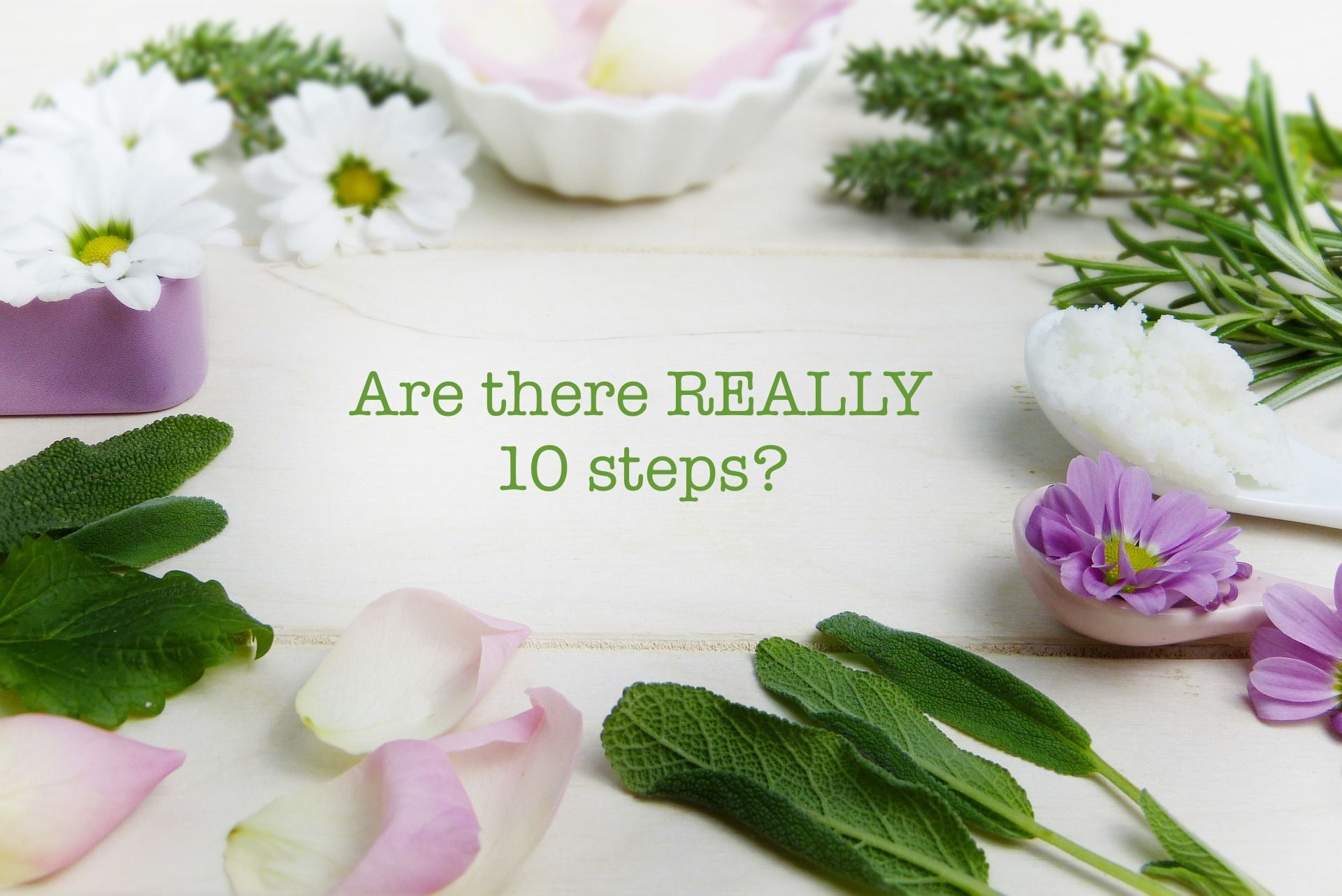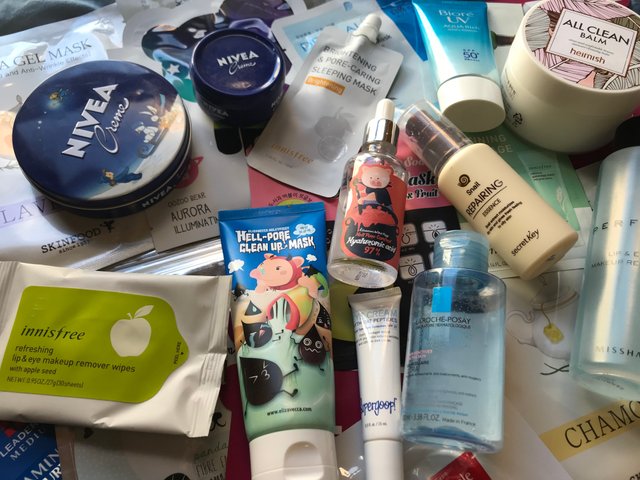Demystifying the Korean Skincare Routine
Hi steemians! Welcome to my mini-series where I geek out about skincare. You can find the first post about how I fell in love with Korean skincare here. Quick disclaimer: I am neither Korean nor a skincare expert – I’m just really enthusiastic about this stuff!

If you’ve read about Korean skincare before, you’ve probably heard of the ten-step method. The steps are usually listed as: oil cleanser, water cleanser, exfoliant, toner, serum, ampoule, sheet mask, moisturizer, eye cream, and sunscreen.
But while it may sound like there are ten steps, the truth is that Korean skincare is about giving your skin what it needs — no more, no less. So if your skin needs two products one day and eight products the next day, that’s totally fine. The number of steps that you use will depend on a lot of things, such as: if your skin is oily or dry, if you have a breakout, if you’re traveling, if you have a special event coming up, or (my most common reason for changing your routine) if you’re tired and don’t want to spend any more time in the bathroom than you have to.
So how do you know which steps to add or get rid of? That’s going to depend on the state of your skin, but it helps to understand all the different steps/products at your disposal and what they do. Below, I’ve created a quick guide to all the different kinds of products in a skincare routine and put them in the order that they would go on your face.
This isn’t meant to be comprehensive, and later I’ll do a few posts where I go more in depth on what each product category does and which specific skincare products I like to use. But my hope is that this will be a good jumping-off point if you’re new to Korean skincare routines.

Oil Cleanser — an oil-based cleanser that helps to get rid of excess oil on your face. It’s common to skip this step in Western skincare routines because of a belief that oil products cause acne, but this isn’t true. Fun fact: makeup and sunscreen are most effectively removed by oil cleansers. It’s best not to skip this step unless you’re in a pinch.
Water Cleanser — the kind of cleanser most commonly used outside of Asia. Cetaphil, for example, is a water-based cleanser. These cleansers help to get rid of residue from oil cleansers and wash away water-based impurities like sweat and environmental pollutants. This step is the only true non-negotiable when you wash your face.
Exfoliator — there are two main kinds of exfoliators: chemical exfoliators and physical exfoliators. Generally speaking, chemical exfoliators are more gentle on the skin. Exfoliating gets rid of dead skin cells and encourages faster cell turnover. It’s best to exfoliate two or three times a week — if you exfoliate more than that, you’re running the risk of compromising your skin’s natural barrier function.
Toner — toners help to restore moisture to your skin after cleansing and exfoliating, and they also help to balance your skin’s natural pH. They also make your skin damp, which helps your skin absorb other products in your routine. It’s best not to skip this unless you have to.
Sheet Mask— a thin sheet soaked in an essence/serum/ampoule. You put it on after toner. On the days that you use a sheet mask, it will be the last step in your skincare routine because sheet masks are highly moisturizing and take the place of essences and serums. It’s recommended that you use a sheet mask anywhere from 1-3 times a week, but some people use them every day and love it. This step is optional (but very relaxing).
Essences/Serums/Ampoules/Treatments — lots of fancy words for one thing: products that target specific skincare concerns. These go on in order from most watery to least watery, which will depend on the specific products that you’re using. These products are optional, and how often you use them will vary from product to product (for example, some anti-aging serums and ampoules are too strong to use on a daily basis).
Moisturizer — both face moisturizers and eye creams fall under this category. Moisturizers help to seal all of your other products into your skin, which is why they come last. Moisturizers also help to prevent wrinkles. If you wash your face, you should finish with some kind of moisturizing product.
Sunscreen — the last step in any morning routine should be sunscreen, because a lot of skincare products that target acne or have anti-aging properties make your skin more susceptible to sun damage (read: freckles, dark acne scars, wrinkles, skin cancer). While some people may argue that this step is optional in the morning… it shouldn’t be.
I hope that this was helpful! If you have any questions or just want to geek out about skincare together, feel free to leave a comment below.
Best,
The Owl Hours
Sometimes I skip the sheetmasking, serum or toner, but I never skip the double cleansing. It made a huuuge difference using an oil based cleanser, I almost never get pimples.Cheers for the post!
I was shocked when I first started using an oil-based cleanser at how well it worked. I try not to skip it unless I'm traveling, since I don't like carrying two cleansers with me. But I probably should... ^_^"
Your writing is very good
Thank you!
your writing is so nice.i like it.
upvote restem done
Thank you!
Wow
Learning new things everyday here...
Nice post
Thank you very much!
wow😚@theowlhours exelent post
Thank you!
wow nice post...i like your post..
follow me please
To listen to the audio version of this article click on the play image.

Brought to you by @tts. If you find it useful please consider upvote this reply.
https://steemit.com/adsactly/@louismata/fear-the-heart-heartbleed-steemitschool
nice. do you own a blog ill love to follow up. you can check mine at www.thatstylishmedic.wordpress.com